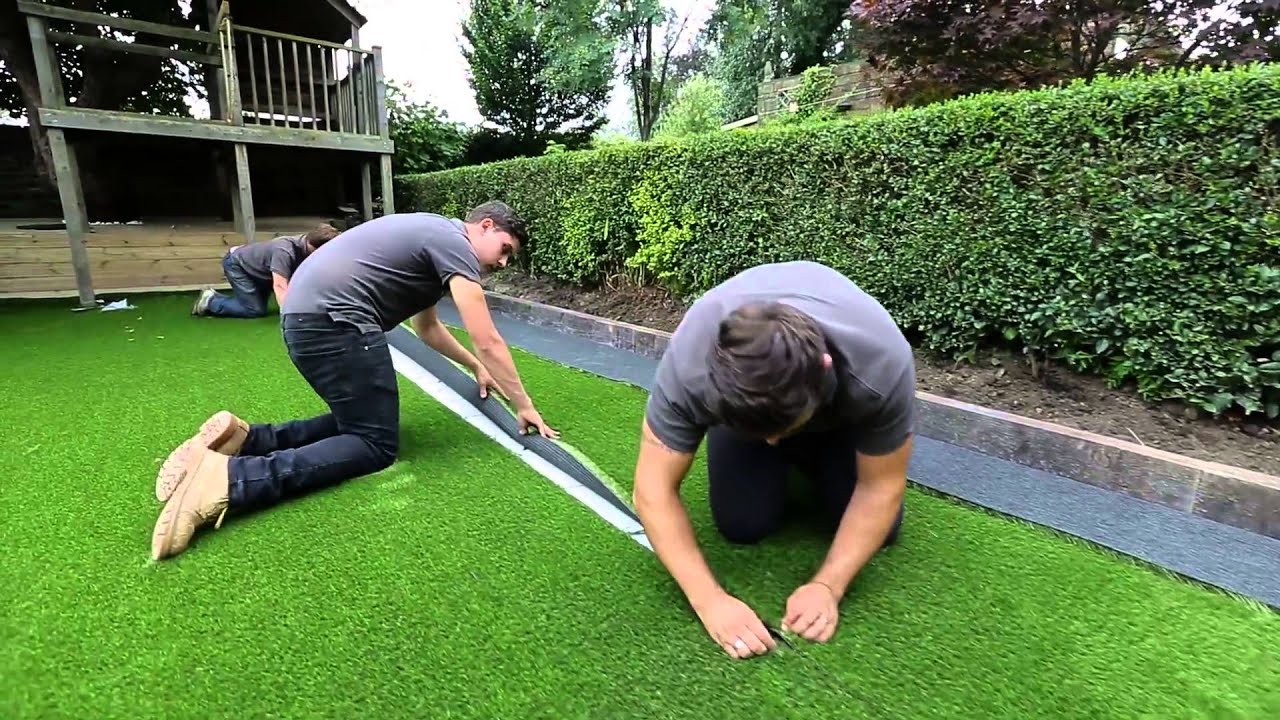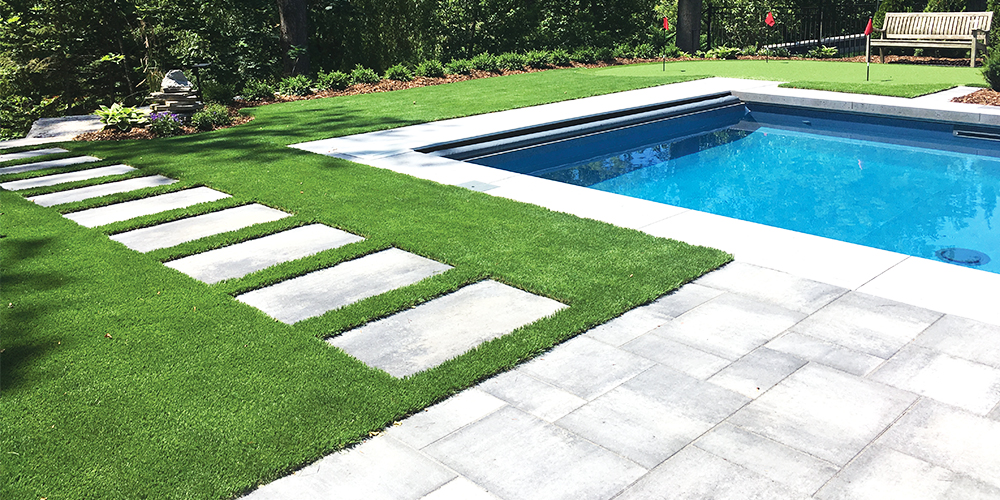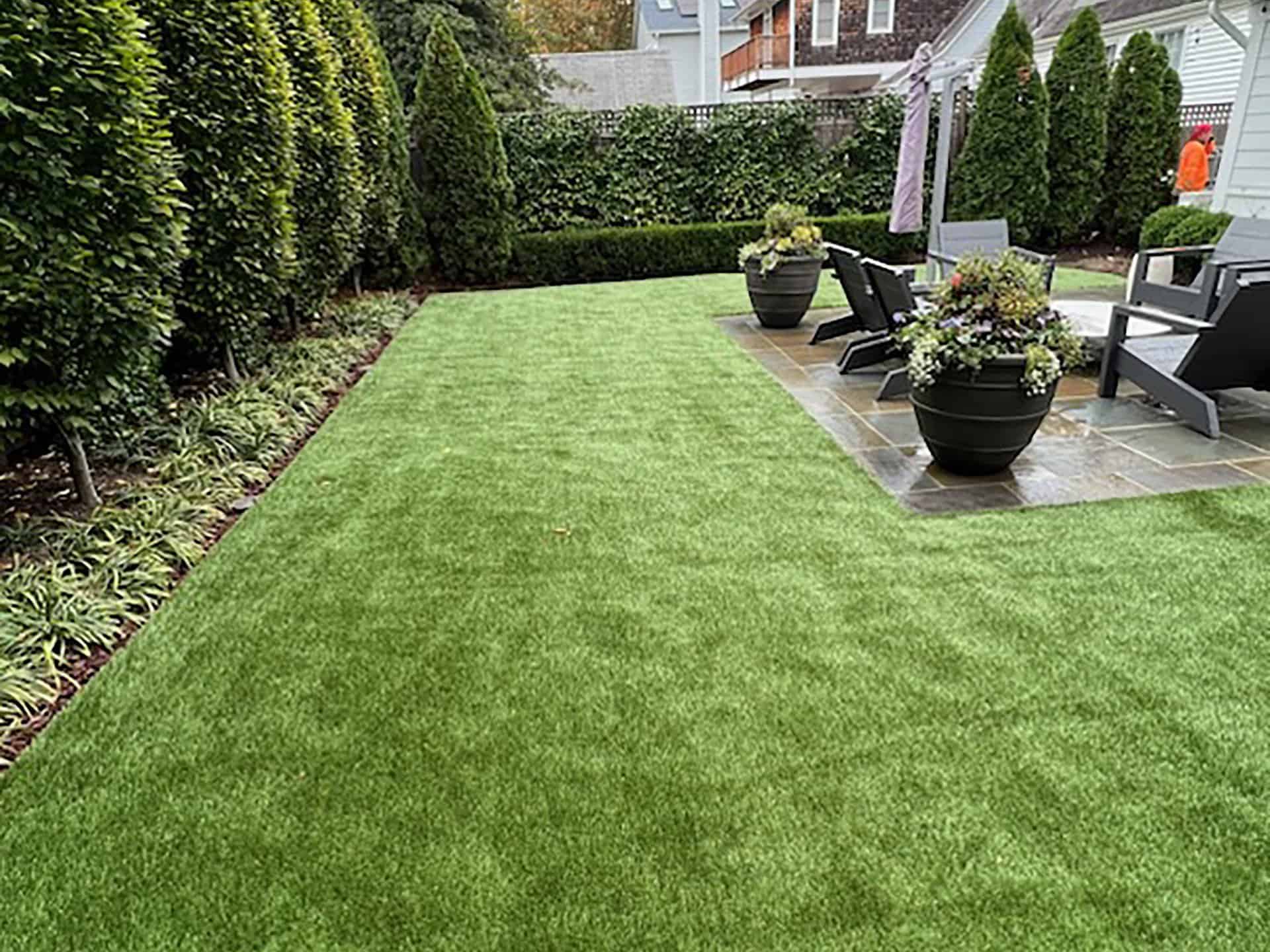Delve Into the Environmental Benefits of Opting for Synthetic Grass Solutions
The adoption of man-made lawn remedies presents a compelling possibility to address pushing ecological difficulties. By considerably decreasing water use and lessening the application of dangerous chemicals, these options not just promote lasting landscaping yet likewise protect neighborhood environments. Furthermore, the reduced carbon footprint linked with reduced upkeep activities adds to a more lasting approach to land monitoring. Nevertheless, the effects of these benefits expand beyond simple preservation efforts, increasing inquiries about their long-lasting influence on habitat conservation and total ecological equilibrium. Checking out these measurements discloses a complex interplay worth taking into consideration.
Water Preservation Perks
Among one of the most considerable benefits of synthetic grass is its capability to save water. Conventional turf lawns require substantial watering, specifically in locations vulnerable to dry spell or water limitations. In comparison, synthetic grass does not need watering, significantly reducing the overall demand for water sources. This attribute is especially helpful in dry regions where water scarcity is a pressing problem.
By getting rid of the need for normal watering, synthetic lawn adds to lasting landscape methods and aids reduce the ecological effect of too much water usage. In addition, the conservation of water encompasses the reduction of drainage, which can lead to dirt disintegration and waterway air pollution.
In addition, the installation of synthetic grass allows communities and home owners to allocate water resources a lot more successfully, concentrating on important usages such as alcohol consumption water and agriculture. The shift towards synthetic grass not just promotes responsible water usage however additionally straightens with broader environmental goals focused on protecting all-natural sources.
As areas significantly prioritize sustainability, the water conservation benefits of synthetic grass provide an engaging situation for its fostering in business and property landscape design jobs.
Minimized Chemical Use
The shift to fabricated lawn dramatically lowers the dependence on chemical therapies frequently utilized in natural turf maintenance. Traditional turf monitoring normally includes the application of herbicides, pesticides, and plant foods to advertise growth and control pests. These chemicals can pose threats to human wellness, regional wildlife, and the setting, adding to soil and water contamination.
In comparison, fabricated grass eliminates the demand for these unsafe compounds. Once mounted, it needs very little upkeep, largely consisting of regular cleansing and irregular infill replenishment. This decrease in chemical usage not just profits the immediate setting but additionally adds to broader eco-friendly stability. By minimizing the release of synthetic substances into the ecological community, synthetic grass advertises healthier soil and water supply.
Furthermore, the lack of chemical runoff related to synthetic grass installations helps secure local waterways from air pollution, supporting water life and keeping biodiversity. Artificial turf companies phoenix. As areas increasingly prioritize sustainable techniques, going with synthetic grass presents a practical remedy that aligns with environmental preservation goals. Via this shift, homeowner can enjoy lavish eco-friendly rooms without compromising ecological wellness, leading the way for an extra lasting future
Lower Carbon Footprint

In addition, the setup of synthetic grass can lead to substantial water conservation. All-natural grass require significant quantities of water for watering, which not just contributes to the carbon impact connected with water extraction and treatment however additionally pressures local water resources. In contrast, fabricated lawn requires minimal maintenance, needing no watering, consequently considerably minimizing water use and its connected power prices.
Furthermore, the long life of fabricated grass adds to its decreased carbon impact. With a life-span of as much as 15 years or even more, the need for frequent replacements is diminished, resulting in much less waste and reduced power usage in manufacturing and taking care of typical yard choices. On the whole, synthetic grass provides a sustainable alternative for eco mindful landscaping.
Environment Conservation
Habitat preservation is an essential factor to consider in the dispute over landscaping choices, specifically when comparing synthetic grass to all-natural lawn. Natural turf lawns commonly call for extensive maintenance, including making use of pesticides, fertilizers, and herbicides, which can detrimentally affect neighborhood environments. These chemicals can seep into the soil and waterways, harming native vegetation and fauna and interrupting local environments.
Man-made lawn removes the need for damaging chemicals, consequently protecting nearby wildlife and preserving the stability of surrounding environments. The installment of artificial turf can lead to the conversion of former grass areas into more biodiverse landscapes, such as pollinator gardens or indigenous plant locations, which can sustain neighborhood wildlife.
Ultimately, the shift to synthetic grass see post not just saves water and minimizes maintenance efforts but also fosters an extra unified partnership in between human tasks and the natural surroundings, advertising habitat preservation at the Look At This same time.
Long-Term Sustainability
Long-lasting sustainability is a critical consider examining the advantages of synthetic grass over typical lawn lawns. One of one of the most considerable benefits of artificial grass is its sturdiness; it can last up to 15-20 years with marginal maintenance, whereas all-natural lawn requires constant reseeding and substitute. This longevity lowers the demand for continuous sources, such as water, plant foods, and pesticides, which are crucial for preserving a healthy yard lawn.
Additionally, synthetic grass adds to a decrease in carbon emissions connected with lawn treatment equipment. Typical yards frequently call for gas-powered mowers, leaners, and blowers, all of which add to air contamination. Phoenix turf companies. On the other hand, synthetic grass gets rid of the demand for such equipment, advertising a cleaner environment
Furthermore, the manufacturing of man-made lawn progressively makes use of recycled materials, improving its sustainability account. As producers take on environment-friendly practices, the environmental impact of synthetic grass proceeds to decrease.

Final Thought
The fostering of synthetic grass remedies provides significant ecological advantages, consisting of substantial water preservation, decreased dependence on damaging chemicals, and a lower see it here carbon footprint. Furthermore, man-made turf help in preserving natural environments by reducing land disruption and promoting long-lasting sustainability via using sturdy materials. Jointly, these elements emphasize the possibility of synthetic grass to add positively to environmental wellness and offer a practical choice to standard landscaping methods in a progressively resource-conscious globe.
In contrast, synthetic grass does not require watering, considerably minimizing the total demand for water resources. By decreasing the release of synthetic compounds into the environment, fabricated lawn promotes healthier soil and water systems.
Additionally, the setup of man-made lawn can result in significant water preservation. In comparison, artificial grass needs very little maintenance, needing no watering, thus substantially lowering water use and its linked power prices.
